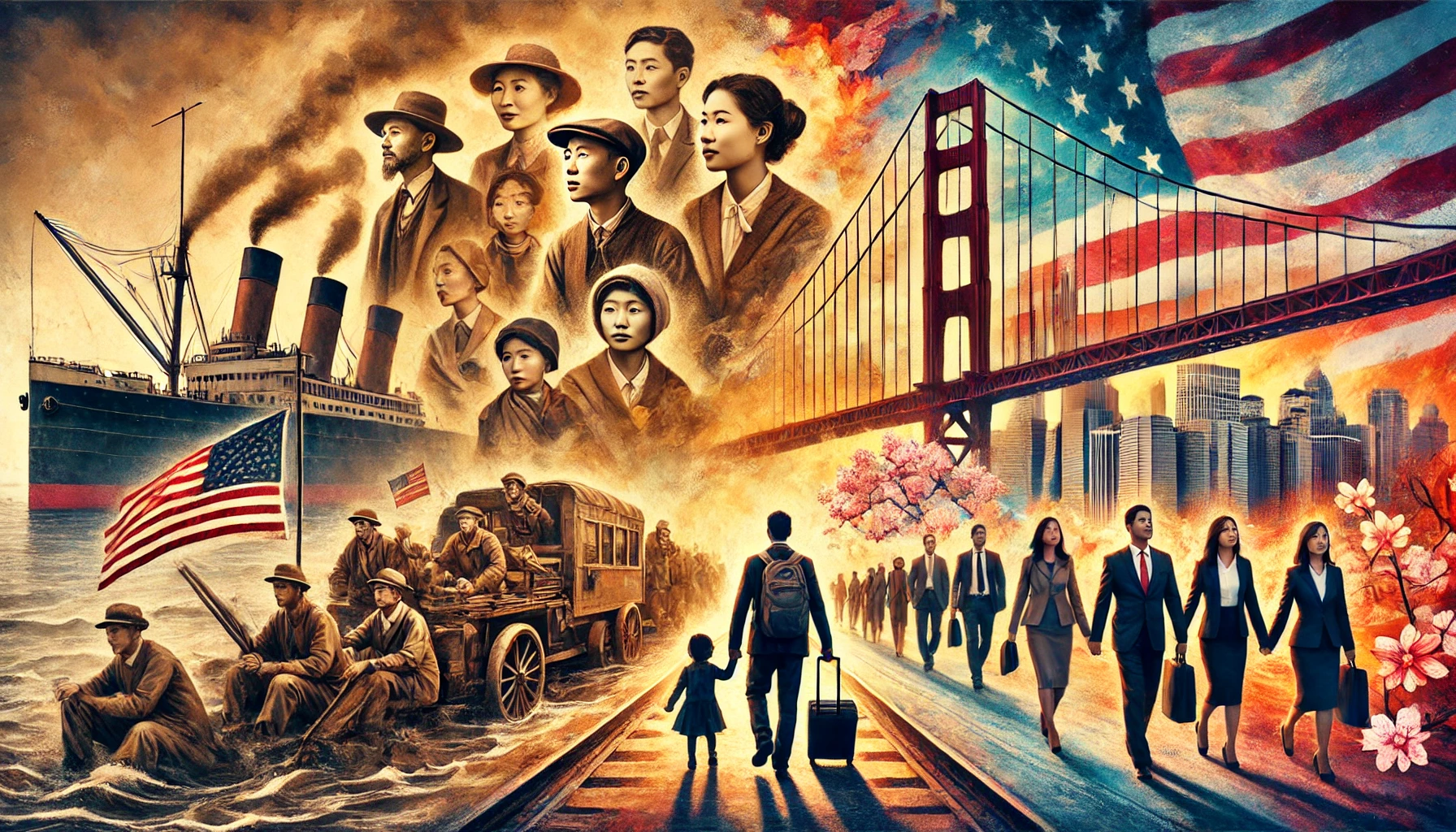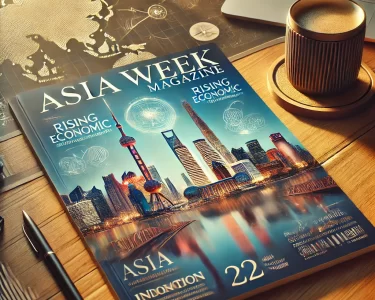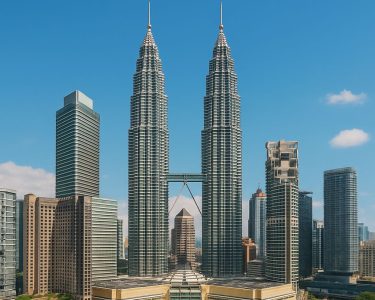Asian Americans have played an integral role in shaping the history, culture, and economy of the United States. Their journey is a story of perseverance, innovation, and transformation, reflecting both the struggles and triumphs that have defined their presence in America. From early immigration waves to modern-day achievements, Asian Americans continue to contribute significantly across various fields. This blog delves into their past, examines their present, and anticipates their future.
The Early Struggles: Asian Americans in the 19th and Early 20th Century
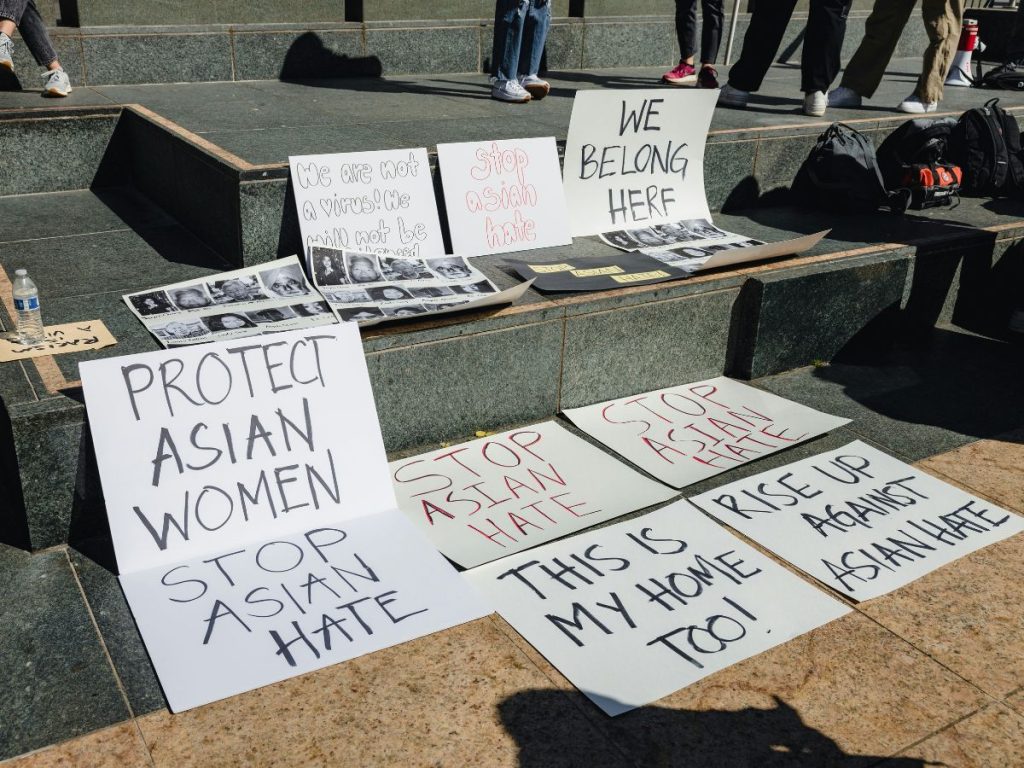
The First Waves of Immigration
The earliest recorded Asian immigrants arrived in the United States in the 18th and 19th centuries, primarily from China, Japan, Korea, India, and the Philippines. The Gold Rush of the mid-1800s and the construction of the transcontinental railroad in the 1860s attracted thousands of Chinese laborers. Despite their crucial role in building America’s infrastructure, they faced extreme discrimination, exploitation, and violence.
The Chinese Exclusion Act and Anti-Asian Sentiments
The rapid influx of Asian immigrants led to economic competition and racial hostility. This culminated in the passage of the Chinese Exclusion Act of 1882, the first major U.S. law to restrict immigration based on nationality. Other Asian communities faced similar restrictions, such as the Immigration Act of 1924, which severely limited immigration from Japan, India, and other Asian countries. These policies reinforced systemic racism and contributed to the marginalization of Asian Americans for decades.
The Role of Asian Americans in World War II
World War II marked a turning point for many Asian American communities. While Japanese Americans were subjected to forced internment under Executive Order 9066, many Asian Americans served in the U.S. military, proving their patriotism and loyalty. The contributions of the 442nd Regimental Combat Team, composed mainly of Japanese American soldiers, remain one of the most decorated units in U.S. military history. The war also helped reshape perceptions of Asian Americans, leading to gradual policy changes.
The Civil Rights Era and the Fight for Equality
Overcoming Legal Barriers
The post-war period saw significant legal victories for Asian Americans. The McCarran-Walter Act of 1952 ended the absolute exclusion of Asian immigrants, allowing them to become U.S. citizens. Landmark cases, such as Loving v. Virginia (1967), helped dismantle discriminatory laws, while the Civil Rights Movement inspired Asian Americans to advocate for their rights.
The Model Minority Myth
During the 1960s and 1970s, the “model minority” stereotype emerged, portraying Asian Americans as successful, hardworking, and academically gifted. While this narrative highlighted their achievements, it also created unrealistic expectations and masked the struggles of many Asian American subgroups facing economic hardship, racism, and underrepresentation.
Asian Americans Today: Progress and Challenges
Economic and Educational Achievements
Today, Asian Americans are among the most highly educated and economically successful groups in the U.S. Many have excelled in fields such as technology, medicine, law, and business. The rise of Asian-led companies, from tech giants like Google’s Sundar Pichai to groundbreaking entrepreneurs like Zoom’s Eric Yuan, underscores their influence on the global economy.
Representation in Politics and Media
Asian Americans have gained increasing visibility in politics, entertainment, and media. Figures such as Vice President Kamala Harris, Senator Tammy Duckworth, and actor Simu Liu have broken barriers, inspiring future generations. However, challenges remain, as Asian Americans continue to fight for fair representation, particularly in leadership roles and mainstream media.
The Rise of Anti-Asian Hate Crimes
Despite their achievements, Asian Americans have faced renewed discrimination, especially during the COVID-19 pandemic. A surge in hate crimes and xenophobia highlighted the deep-seated prejudices that persist in society. Movements such as #StopAsianHate have mobilized communities to combat racism, advocate for justice, and promote solidarity.
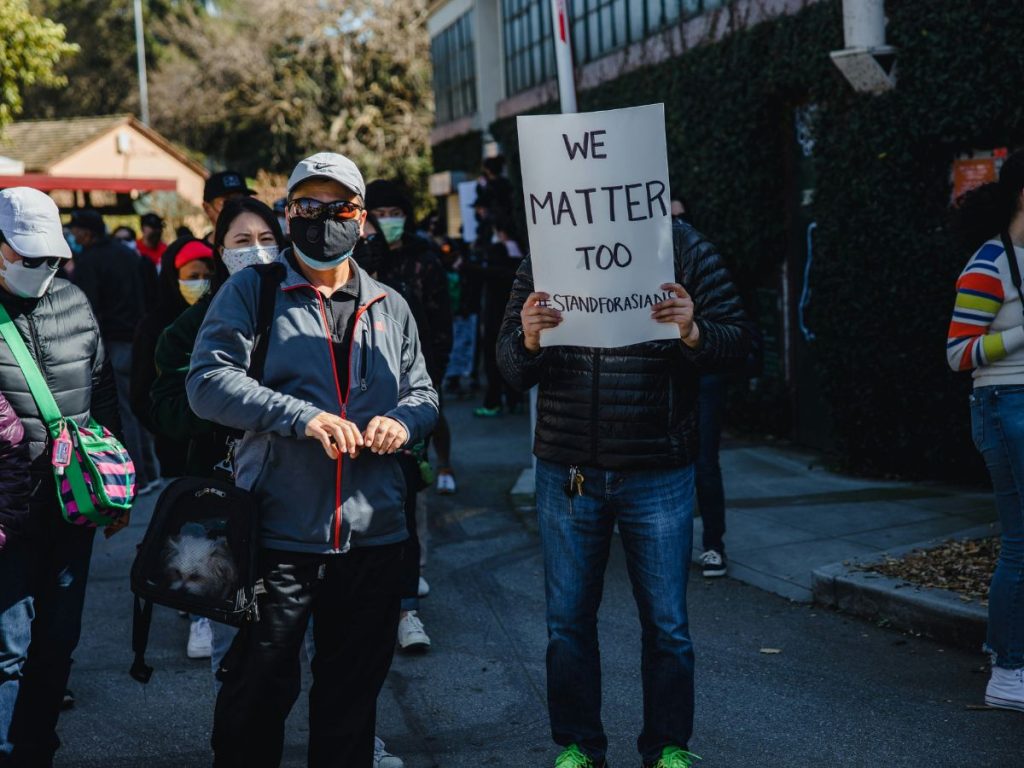
The Future: Toward a More Inclusive America
As Asian Americans continue to navigate their place in U.S. society, their future looks promising yet challenging. Advocacy for equitable policies, greater representation, and cultural inclusivity will remain key priorities. With a rich history of resilience and adaptability, Asian Americans will undoubtedly play a crucial role in shaping the future of the nation.
Final Thoughts
The story of Asian Americans is one of endurance, transformation, and progress. From their early struggles against discrimination to their present-day contributions in various fields, they have proven their resilience time and again. By understanding their history and addressing ongoing challenges, we can work towards a more inclusive and equitable society for all.
Asian Americans then and now remain a testament to the enduring spirit of immigrants and the profound impact they have on the American dream. Their journey continues, paving the way for future generations to thrive and contribute to a diverse and dynamic United States.


